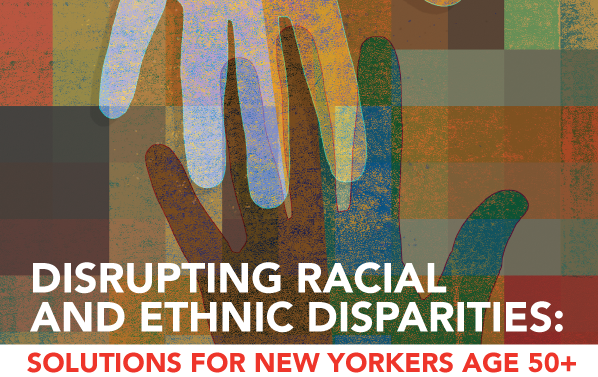AARP Hearing Center

Community Members, Leaders Present Recommendations to WNY Elected Officials at AARP Summit to #DisruptDisparities in Health, Economic Security and Livability
BUFFALO, N.Y.—High costs for prescription drugs, urgent care visits and ambulatory services often force residents 50 and over in Buffalo’s communities of color to forego other necessities. Lack of adequate and affordable transportation options make it difficult for them to keep medical appointments and access food. And personal costs to provide unpaid care to older family members squeeze them financially.
Those are among the problems facing Buffalo’s 50-plus communities of color, community residents and leaders told Western New York elected officials today at an AARP-sponsored Disrupt Disparities summit at the University at Buffalo—at which they also presented recommendations to state and local elected officials from Erie County to achieve solutions.
“The residents and leaders of Buffalo’s communities of color clearly laid out the real problems impacting their lives and presented a sensible plan to achieve solutions to disrupt these disparities,” said Randy Hoak, AARP Associate State Director for Western New York. “AARP urges our elected leaders to listen to their constituents and act.”
The summit, conducted at Hayes Hall and hosted by The Center for Inclusive Design and Environmental Access, followed listening sessions in October that AARP and local partners conducted with members of Buffalo’s African American and Hispanic/Latino communities. The sessions and today’s summit are part of a multi-year campaign by AARP and statewide partners to #DisruptDisparities impacting 50-plus residents of New York’s communities of color.
At the October sessions, convened with the African American Health Disparities Task Force, the UB Center for Inclusive Design and Environmental Access, the UB Center for Successful Aging, The Belle Center, and the William-Emslie Family YMCA, members of Buffalo’s communities of color also identified other problems that included insufficient SNAP (food stamp) benefits, gentrification and foreclosure scams that can force residents out of their homes, language barriers at healthcare facilities and the lack of “senior-friendly” small businesses in their communities.
Recommendations to elected officials include:
- Enacting a state tax credit to help family caregivers offset out-of-pocket caregiving costs.
- More funding for the NYS Office for the Aging’s senior transportation services and other senior programs, especially non-Medicaid in-home services for the elderly that help residents age in their homes, rather than much costlier and mostly taxpayer-funded nursing homes.
- Expanding “telehealth”—the availability of remote healthcare access technology such as video or smart phone connections for medical consultations and visits.
- Shortening the state SNAP eligibility form to help more residents access benefits.
- Renewing beyond March 31 state funding for housing and legal counseling services and enacting legislation to increase consumer protections to prevent foreclosure and deed theft scams.
- Increasing education and outreach about New York’s Elderly Pharmaceutical Insurance Program to help seniors afford prescription drugs, co-pays and other health services.
- Establishing a state “Financial Awareness and Consumer Training for Seniors (Senior FACTS)” program to help seniors navigate their finances and determine their eligibly for existing assistance programs.
“We are asking policymakers, advocates and the public at large to share their knowledge and experiences of existing disparities so we can press public officials to adopt additional policy changes that address these inequities,” added AARP’s Hoak.
“We are proud to co-host these crucial conversations with AARP, the Task Force, and the IDeA Center,” said Dr. Bruce Troen, director of the UBCSA and chief of geriatrics and palliative medicine at UB’s Jacobs School of Medicine & Biomedical Sciences. “Buffalo is the fifth-fastest aging city in the country, so health disparities in aging are even more urgent here. By collaborating with the community to advance our understanding of aging and working to translate that knowledge quickly into local policy and practice, together we can make Buffalo the best place to age for everyone.”
“The Center for Inclusive Design and Environmental Access at UB is proud to be a co-host of the Disrupting Disparities events, because we believe inclusive design plays an important role in eliminating health disparities by addressing issues like insufficient accessible housing, inadequate transportation access, and unsafe streets and sidewalks,” said Brittany Perez, Director of Outreach and Engagement at UB’s Center for Inclusive Design and Environmental Access. “We are excited to see recent efforts to increase the adoption of universal design practices in Buffalo and we are committed to continuing to provide education and design resources so that all communities in Buffalo are more inclusive.”
Those interested in following or joining the conversation can visit www.aarp.org/nydisruptdisparities, which will serve as a platform to host the latest research findings, policy updates and information related to this effort, and a place to contribute ideas and insights.































































